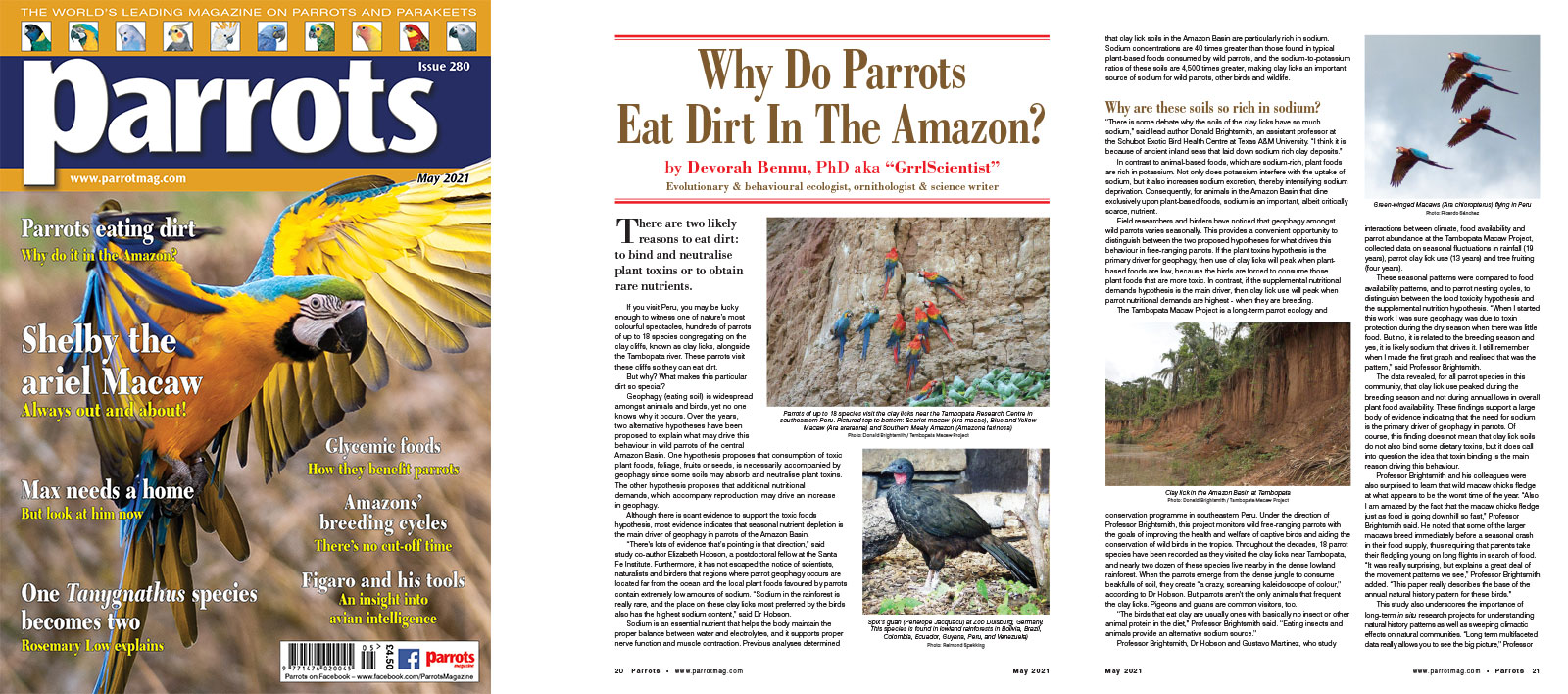
By Devorah Bennu, PhD aka “GrrlScientist”. Evolutionary & behavioural ecologist, ornithologist & science writer
There are two likely reasons to eat dirt: to bind and neutralise plant toxins or to obtain rare nutrients.
If you visit Peru, you may be lucky enough to witness one of nature’s most colourful spectacles, hundreds of parrots of up to 18 species congregating on the clay cliffs, known as clay licks, alongside the Tambopata river. These parrots visit these cliffs so they can eat dirt.
But why? What makes this particular dirt so special?
Geophagy (eating soil) is widespread amongst animals and birds, yet no one knows why it occurs. Over the years, two alternative hypotheses have been proposed to explain what may drive this behaviour in wild parrots of the central Amazon Basin. One hypothesis proposes that consumption of toxic plant foods, foliage, fruits or seeds, is necessarily accompanied by geophagy since some soils may absorb and neutralise plant toxins.
The other hypothesis proposes that additional nutritional demands, which accompany reproduction, may drive an increase in geophagy.








Parrot Chat
Buyers Guides
Breeding articles